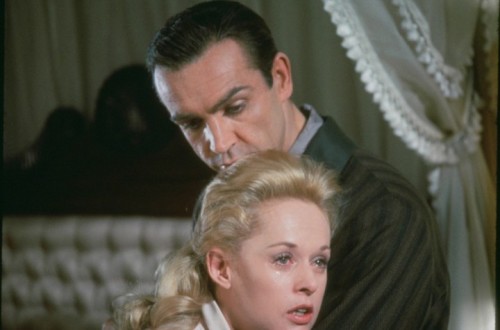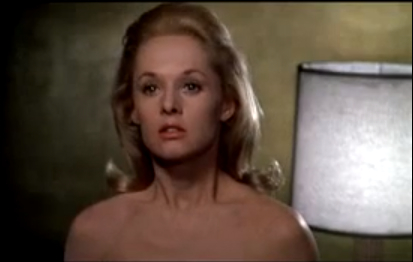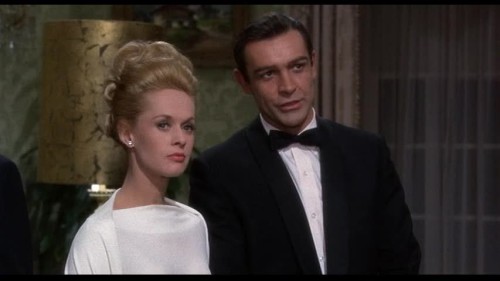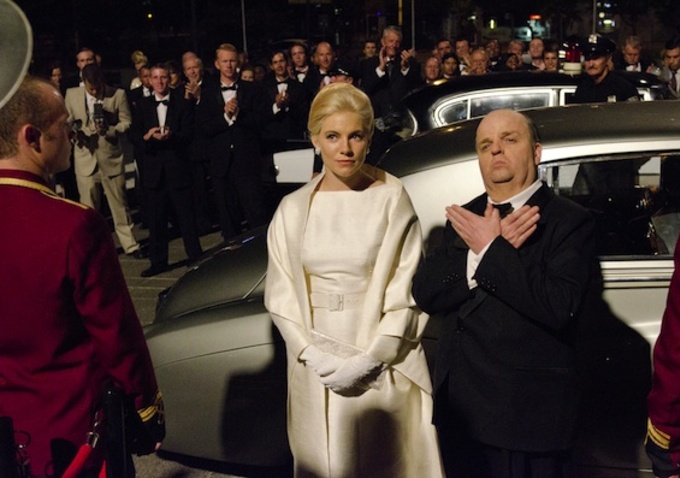Written by Elizabeth Kiy.
With all the talk of 50 Shades of Grey in the past few weeks, boycotts and debates, and a planned re-release of the superior BDSM-romcom Secretary, the film that has really been on my mind is Marnie . Since I first saw it several years ago, I’m been intermittently perplexed by the film, a 1964 Hitchcock outing about the capturing (through marriage) and breaking of a young, beautiful and damaged con artist, played by Tippi Hedren , the grandmother of 50 Shades star Dakota Johnson. The cinematography is beautiful, the performances are captivating, but the story? Watching it, I keep expecting someone to jump out and scream that it was all a joke, that we weren’t expected to swallow this. Maybe it’s dated, but I want to believe that the relationship in Marnie was recognized as horrific and abusive even then.

If you didn’t already think Alfred Hitchcock was a horror movie villain , Marnie sure makes this clear. For starters, James Bond himself, Sean Connery plays Mark Rutland, is misogynist and unrepentant rapist who is the movie’s hero. Yes, he’s the hero. A wealthy industrialist and armchair zoologist, who discovers the young woman who just robbed a business acquaintance and blackmails her into marrying him.
As a con artist, Marnie slips and out of identities and hair styles, though blonde is always the constant, the “real” her. The one constant presence in Marnie’s life is her mother, who lives in a poor area down by the docks of an unknown town. She acts as the breadwinner for her mother, painting her as “unnaturally” masculinized. One of the things she brings her mother is a fur coat, a typical gift given by a rich lover at the time.
While Hedren was being abused by Hitchcock off-screen, on-screen Mark finds his new wife is cold and disinterested in sex. In Hitchcock world, this must mean there is something wrong with her. She is after all, the classic ice blonde taken to extremes. She holds her head high and meets men’s gazes and pulls her skirt down over her knees if she feels she is being gawked at. She’s disgusted and afraid of the thought of Mark touching her and extolls her hatred and mistrust of men, which lends the film to queer readings.

He rapes her on their wedding night when she refuses to have sex with him. It is not at all ambiguous. She screams and tries to fight him off but he keeps going. It’s as explicit as it could be at the time. Never are we told that what Mark did was wrong, or that it makes him a bad person. Instead, we are meant to sympathize with his urges. He is a red-blooded American man, he can be patient about other things, can treat Marnie as an animal, a case study to be analyzed at arm’s length, but on his wedding night? Moreover, as he is presented as normal while Marnie is damaged, his actions are represented as markers of his psychological superiority. He know Marnie better than she knows herself, he can tell it’s what she wants even when she says no; the standard defense of the rapist, only we’re meant to take it seriously here. Even when Marnie attempts suicide the next morning, it’s portrayed as a symptom of the things that were already wrong with her, not a reaction to being victimized.
In married life, Mark continues to hold Marnie under this thumb. He tells her how to dress and act and forces her to attend parties and act as his supportive partner. She must live in his house, trapped like a captive animal and studied, by her husband, zoology or Freudian text in hand. Privately she screams how much she hates him, how much she wants to get away from him, but he owns her, both as a husband and blackmailer.
And though she puts up a strong act, she seems to need him. The slightest flash of the color red or crash of lightening send her into hysterics and Mark’s arms. She seems to get a sense of sexual release from riding her horse (a hamfisted Freudian touch) and it’s his death that finally breaks Marnie’s spirit, like she is indeed the wild horse in need of taming that Mark viewed her as.

This all leads up to the final confrontation with Marnie’s mother, wherein Mark blames her for “ruining” Marnie. It begins when he literally drags her to her mother’s house, crying and weak from the earlier trauma and ends with the heavy-handed revelation that of repressed memories of a near sexual assault in her childhood. Hearing this, grown up Marnie regresses back to her childhood, a little girl crying for her mother’s love and leaning on her husband’s strong shoulder.
In the last scene they walk out into an uncertain future but it seems like things might be all right for these crazy kids. They’re ready to love each other. Mark is our hero, he’s fixed this girl and she can now have a normal sex life. She can be a wife, like a woman is supposed to be.

Of course this is crazy and nauseating and its rightfully a lesser Hitchcock. But the film is beautiful and seductive, dressed up in Classic Hollywood glamour and its easy to be lulled into ideas of the unilateral superiority and wholesomeness of old films. But not everything a great director touches turns to gold. For all the ills of contemporary filmmaking and modern culture, at least you couldn’t make a film like Marnie anymore.
At least, I hope so.
Elizabeth Kiy is a Canadian writer and journalist living in Toronto, Ontario.

